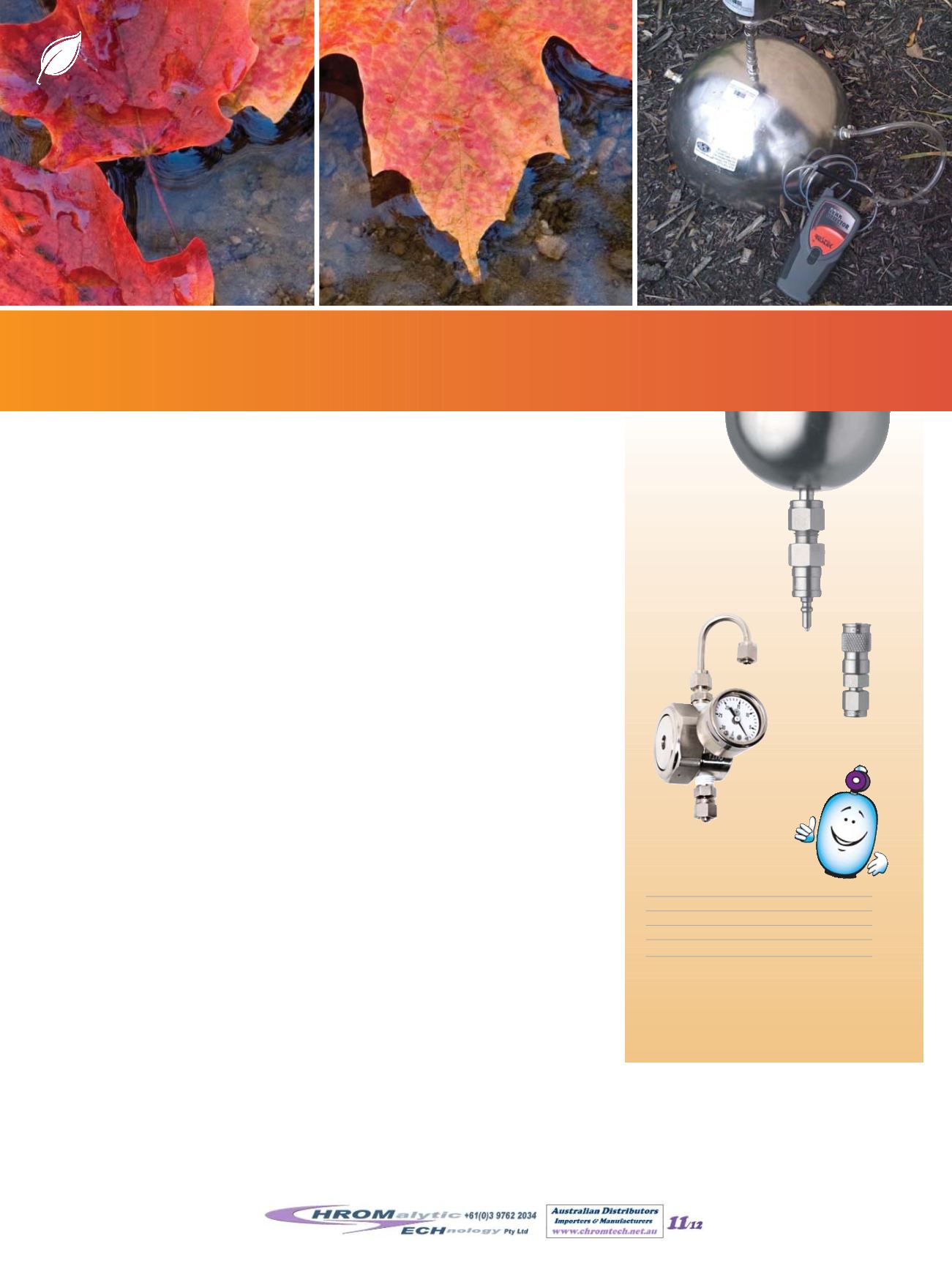

Avoid Resampling Soil Vapors
Confirm Tracer Gas in the Field Using a Leak Detector
By Irene DeGraff, Air Monitoring Product Marketing Manager, Russell Pellegrino, Director of Technical
Services*, and Kelli Steindl, GC Accessories Product Marketing Manager
* Centek Laboratories, LLC
• Confirm system integrity before sample collection.
• Minimize resampling by detecting leaks prior to sampling.
• Eliminate costly and time-consuming lab analysis of tracer gas.
References
1. NewYork State Department of Health, October 2006, Guidance for Evaluating Soil Vapor Intrusion in the State of
NewYork,
http://www.nyhealth.gov/environmental/investigations/soil_gas/svi_guidance/docs/svi_main.pdf(accessed August 27, 2010).
Restek
Mini-Cans
are ideal for both
tracer gas transfer
and introduction,
as well as sample
collection.
Mini-Can Options
Sizes
400cc, 1000cc
Valves
Quick connect, diaphragm
Interior Coating Electropolished, Siltek treated
Sample Inlets Area, personal
Flow ranges
0.5-15 sccm
For a full product listing,
visit
www.restek.com/airEnvironmental
10
www.restek.comVapor intrusion occurs when pollutants from contaminated soil or ground water migrate into
buildings and ambient air. Adverse health effects can result when vapors occur in high con-
centrations, or if toxic volatile organics are present. These compounds are monitored using a
variety of sampling procedures, including soil vapor, sub-slab, indoor, and ambient air test-
ing. Sample collection for volatile organic compounds (VOCs) typically is performed with an
air canister and passive sampling kit according to EPA Method TO-15 or a similar method.
Costly Detection in Lab Doesn’t Prevent Resampling
The primary challenge in vapor intrusion monitoring is distinguishing vapor intrusion from
other sources of exposure. In order to establish that VOCs are from soil vapor, rather than
from the surrounding environment, sampling systems (ports) must be tested with tracer
compounds, such as helium, and shown to be properly sealed. Sample collection system
integrity can be demonstrated by including the tracer gas in the list of target analytes report-
ed by the laboratory; however, if high levels are found the sample is rejected and costly
resampling may result.
Using a Leak Detector in the Field Saves Time and Money
Detection of tracer gas in the field is a cost-effective alternative to lab analysis that assures the
integrity of the sampling system before sampling occurs. The Restek Leak Detector provides
good screening of helium tracer gas at concentrations of 10%, the level at which sample port
resealing is required. In addition, this unit is just a fraction of the cost of other field portable
devices, such as photionization detectors, which may be too sensitive for screening purposes.
Real-time detection of helium tracer gas in the field using a Restek Leak Detector as shown in
Figure 1 is a simple, inexpensive way to minimize resampling by establishing system integrity
prior to sample collection. Centek Laboratories pioneered this technique and contributed to its
inclusion in the New York State Department of Health method[1].
Website :
www.chromtech.net.auE-mail :
info@chromtech.net.auTelNo : 03 9762 2034 . . . in AUSTRALIA











